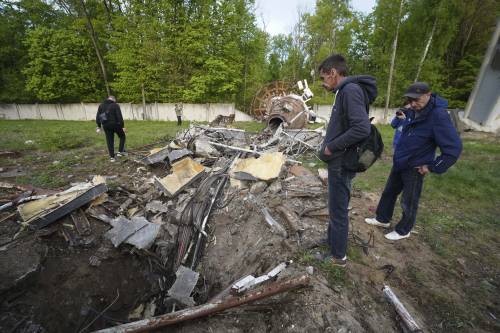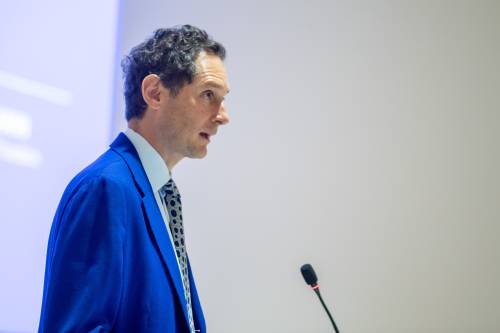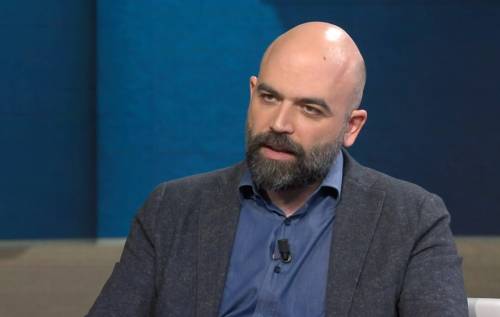Involvement of international actors has been essential in resolving conflicts, rebuilding, and helping reconcile the Western Balkans in the last few decades. Throughout the1990s, foreign intervention was meant to stop the bloodshed in the region after the dissolution of Yugoslavia, ending the wars in the region. The Western players, the United States (U.S.) in collaboration with the European countries, managed to achieve peace in the Western Balkans. They brokered the Dayton Accords in 1995 that put an end to the three-and-a-half-year Bosnian War, and in 1999, prevented the genocide in Kosovo as a result of the U.S. led NATO intervention in the region.
In 2000s, while the U.S. continued to view the Western Balkans as a strategic region and supported its European integration, the responsibility for the day-to day business in the democratic and economic transition of the region was mainly ceded to the European Union (EU). The belief was that enlargement, a core priority of the EU since the 1990s, and widely acknowledged, as the most powerful instrument of EU’s foreign policy, would have been the most effective conflict prevention mechanism in the Western Balkans. However, the influence of the U.S. has been unparalleled, especially in critical cases such as in supporting the EU facilitated dialogue for the normalisations of the relations between Belgrade and Pristina in 2012.
The region has moved forward from the conflict situation of 20 years ago and progress has been evident. Today, three of the countries of the region have turned from security consumers into security providers, becoming NATO members (Albania, Croatia, Montenegro). Croatia has also achieved EU membership in 2013. Others are candidate or aspirant countries of NATO and EU.
But unfortunately, while the situations seemed very optimistic in early 2000s, today, we continue to face “new” Balkan problems. Things are getting more chaotic in the region, with political and ethnic divisions more entrenched than before, mainly as result of a spectrum of issues from economic underperformance and corruption to lack of opportunities and vision for the future.
Internal structural weaknesses became glaringly evident in the aftermath of the 2009 global economic crisis that hit the Western Balkans through the Eurozone finance and trade spillover effects. After battling a double-dip economic recession, the Western Balkans are experiencing a sluggish recovery, weak economic performance, skyrocketing unemployment, and dangerous sovereign debts. The quality of democracy, market economy, political management and rule of law remain concerning. Doubts are raised that democracy in the Western Balkans has turned more into power struggles, creating a gap between elites and citizens. The new institutions of market economy are undermined by the informal economy and the widening economic and social disparities. Organized crime and corruption remain serious challenges.
Democratic reforms are crumbling in the region. The vacuum of power created by instable and weak institutions and a lack of meaningful political action in the enlargement process since the 2014´s five-year moratorium, has left an ample space for new external players to exploit. The biggest challenge is the EU´s weakening appeal to deal with the unresolved issues in the region.
The consensus remains, both within and outside the region, that the only realistic project for achieving stability and development in the Western Balkans is integration with the Euro-Atlantic institutions. While, accession of Montenegro in NATO, strongly supported by the U.S., sends very positive signals to the whole region, unfortunately the EU integration of the Western Balkans remains stuck between declarative political promises and reality on the ground. After accepting Croatia in 2013, it seems that the EU has lost its appetite for further expansion, and the completion of the “European project” for the region is threatened by serious challenges, leaving in its backyard a vacuum of poor and unstable countries.
This presents serious hurdles for the democratic transformation of the region. Unemployment (68%) and economic hardship (55%) remain the main concerns of the population in the Western Balkans.
[1]
Social discontent is deep, the poverty is enduring and levels of inequality are increasing, encouraging outward migration of people. Reasons for emigration are clear. With income and institutional quality differentials between the Western Balkans and Western Europe still wide and actually widening, the push and pull factors driving emigration will likely persist even stronger in the future.
With the dim prospects of the Western Balkans getting into the EU, the easiest way to the EU for its people has been through migration. With an average per capita income of just $ 4,936 – equal to only 14% of the average per capita incomes of the EU countries ($34,860) – the EU’s attraction is palpable. The past is serving as prologue. Leaving the region is highly desirable, with every other person contemplating to looking for a job abroad. At the same time, this is the worst indicator of the state of affairs in the region.
In 2015 alone, more than 130,000 irregular migrants from Kosovo, Albania and Serbia, were asylum seekers in the EU, with Germany as their main destination, although a large majority of the asylum seekers were sent back home, since all Western Balkan countries are now considered “safe countries.”
Objective prospects of the Western Balkans joining the EU any time soon are fading, throwing the future of the small region into more doubts by the high degree of “enlargement fatigue” that had gripped more than half of the EU citizens. Despite the fact that, signs of this “enlargement fatigue” are partly unsatisfactory reforms and structural difficulties in the current candidates in the western Balkans, sending de-stimulating messages to the region for further enlargement is creating the unintended consequences of “reforms fatigue” and leaving ample space for foreign players to explore.
The prolonged transition process and the dire perspective for an eventual convergence with rich European countries have contributed to a plunge of public support for the EU. The negative signalling has created a deep sense of pessimism around the region, with only 39% of people in the Western Balkans thinking EU membership is a good thing, and a large number (36%) having a neutral opinion.
[2]
Albania and Kosovo are the only exceptions. Negative perceptions prevail in Bosnia and Hercegovina, and Serbia, with large numbers thinking that their country will never become an EU member. A key part of the explanation is a wrong-headed form of nostalgia – about the (communist) past being better than the challenges of today. Quite self-destructively, the lack of successful developments in the region will continue to feed growing anti-EU sentiments. Pessimism is real, but scapegoating the EU for the slow transformation of the Western Balkans is unfair. This brings a dangerous negative feedback loop. The overriding problem with the prevailing pessimism is that, wholly independent of the question of EU membership, this languishing does not encourage economic, political and social reforms that have stalled across the region – and which the countries very much need for their own sake.
In this situation, Moscow's meddling in the Western Balkans has increased, while the West's attention has lost focus from the region. Russia has long stoked divisions in this region in order to shore up its strategic advantage over Europe, and increased pessimism and indifference toward Western institutions is making things easier for the Kremlin. In a geo-political rivalry with the West, Russia is trying to project its power as a global player in the region, using the Western Balkans as buffer to reassert its sphere of interest. Attempting to weaken the ties of the region with the West, complicating, or even excluding NATO and EU membership, Russia´s main objective is the creation of a "non- alignment zone" in the region. Russian influence in the region is not abstract; it also has strong economic interests. The Russian presence is not confined to Serbia, as its natural strategic long-time partner, but stretches across the entire region. Reasserting its role as the protector of Orthodox Christian population, and through a mix of hybrid tools, Russia is acting as an opportunistic spoiler to achieve influence through corruption, coercion, businesses, and state propaganda, with the objective to destabilize the region and stall its Euro-Atlantic integration.
Moscow is actively politicizing and exacerbating existing ethnic and religious tensions in the region. Russia publicly opposed Montenegro´s membership to NATO, allegedly even supporting a failed coup attempt at the end of 2016 designed to stop the process. Macedonia, an EU candidate country since 2005, in recent months has been witnessing a flare-up of political clashes. By exploiting the constitutional crisis in Macedonia, Moscow backed Macedonia president's decision to block a parliamentary majority to form a government, and even accused NATO and the EU for creating the crisis. Russia is inflaming internal political tensions in Macedonia but also relations between Serbia and Kosovo through traditional propaganda themes and dangerous rhetoric of clashes between "Greater Albania" and "Greater Serbia."
Other new players in the Western Balkans are Turkey and the Gulf states, which have stepped up their support for Muslims, but the help they provide isn’t always benign. Unfortunately, some of the leaders in the Western Balkans are seeking to leverage "the Russian challenge" to extract concessions from the Western partners while paying lip service to reform efforts. On the other side, EU enlargement fatigue is also used as a scapegoat for not pressing with internal reforms.
Why should the Western Balkans matter to the West? To begin with, we should not forget its strategic position and proximity to the EU. As part of the natural Europe, any destabilization in the Western Balkans can quickly become a problem for Europe. Only few years ago, the Western Balkans was the main route of transit for the refugees and irregular migrants that entered Europe, coming from Middle East and North Africa. Uncontrolled transit route poses not only humanitarian, but also high security risks, including terrorism.
In such situation, the West faces an important choice: treat the Western Balkans as a key strategic asset, or risk losing the region to Russian influence and infiltration by Islamist extremism. In this light, the U.S. engagement to the region is increasing, as a country that has extraordinary influence in the Western Balkans. Visits of members of U.S. Congress and representatives of the Department of State have helped raise the attention of the American diplomacy towards the region. This engagement is crucial, not only to enhance stability and foster economic and democratic development, but also to advance U.S. security goals, acting as a bulwark against Islamic radicalization in the region. In fact, in the recent months, the U.S. diplomacy, in collaboration with the EU, has been crucial is solving political crises in the Western Balkans. As such, visit of the U.S. Deputy Assistant Secretary of State, Hoyt Yee, helped forge an agreement between politicians in Macedonia to allow a peaceful transition of power and managing to solve the deep political and institutional crises that had captured the country in the last few years, narrowly averting a disaster in Macedonia. In Albania, the U.S. diplomacy brokered a deal between the main political parties to hold normal elections, supporting the European “McAllister package,” after the Democratic Party had threatened to boycott, risking to slide the country in a dangerous political crisis. A similar solution is also expected in Kosovo for the creation of the new governments, since none of the three main parties has won sufficient seats to hold a clear majority for the creation of the government.
A joint commitment of EU-U.S. diplomacy is imperative in the region aimed at fostering democratic reforms, promoting moderation, and undermining the appeal of radical Islam. The joint strategy should be based on strengthening democratic institutions and the rule of law, and building accountability mechanisms in the region. Albania is an example where the U.S. and the EU are working together in pushing the judiciary reform in the country, which is crucial for the fight against corruption and advancing democracy in the country.
Without anchors to Western institutions, illiberal democracies and rising religious fundamentalism are likely to become the norm in the region. Amidst such dire circumstances, the EU remains to be seen as the anchor power in the region. In reality, the Western Balkans have not entirely disappeared from the radar of the EU institutions. Despite a recognized degree of “enlargement fatigue” by many member states, the EU is keeping the enlargement policy alive in its backyard. Countries, such as Germany are trying to keep the process open, with initiatives such as the Berlin process
[3]
, aimed at sending a message of support and reaffirmation for the European future of the region, by fostering economic cooperation and political stability within the region-- although without clear timelines. This realistic engagement with the region (the fourth meeting, the Trieste meeting is upcoming) is meant to prevent further damage from the “reform fatigue” that already manifests itself in the region. At the same time serves as a reminder of the 2003 Thessaloniki Summit’s promise of membership
[4]
to the Western Balkans. “Europeanizing” a region still dogged by mistrust, underdeveloped economies, weak rule of law and underrepresented civil society could be understood as a test of credibility and capacity for the EU, the winner of the Nobel Peace Prize in 2012. While, each of the seven rounds of the EU enlargement had different motivations and consequences due to varying geographical, political and economic characteristics of the new members, the underlying motivation has not changed: securing Europe.
The longer it takes the Western Balkans to join EU or at least have some tangible progress in the accession path one thing is for sure: whether inside the EU or outside, these countries on the EU’s edge, will pose a considerable risk to the future of the overall European project. Only a serious road map for EU accession would provide countries in the region with concrete incentives for political and economic reform. This could lead to increased regional cooperation, thereby diminishing interethnic tensions and creating an overall stabilizing effect for the region and continent as a whole. The Western Balkans needs a new type of a “Marshall Plan” to speed up its economic and institutional development, on one main condition, to make the economic and technical aid available only if countries are really committed to collaborate with each other.
European Union is the only game in town. However, the European idea cannot be promoted without changing the current political habitus in the Western Balkans. Mature stages in the EU integration should bring along questions about transparency and accountability of the elites. The final responsibility remains with the political leaders in the region. Only a more serious commitment and higher scrutiny of the EU in the Western Balkans will foster fundamental political, economic and social transformation.
























































